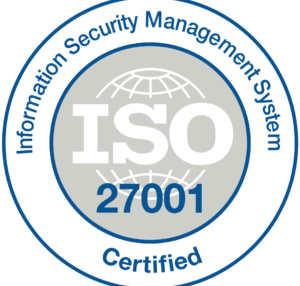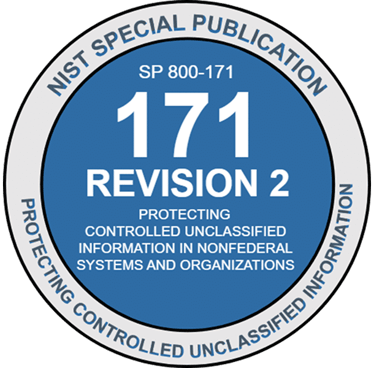
SAIM™ Case Study
SAIM™ (Smart Asset Integrity Management) is a SaaS platform that transforms fuel‑handling facilities through real‑time IoT monitoring, digital‑twin engineering and data‑driven workflows. Co‑founded and architected by Dr. Meraj Mohebi (now Founder & CTO of Formantix), SAIM was deployed at the nation’s busiest airports, reducing repair costs, enabling 24/7 remote oversight and consolidating disparate data sources into a single, actionable user interface. This case study explores the origins of SAIM, the challenges it addresses, its core capabilities and the tangible operational benefits delivered to facility owners, operators and engineers.
Background & Origins
During mid 90s, long before cloud computing and machine‑learning became industry buzzwords, young Meraj rode to work each summer in his father’s pickup. His father—a seasoned operator at a wastewater treatment plant—would explain the daily grind: manual log‑books, paper checklists and the constant fear of missing a critical maintenance alarm. Over crackling dial‑up connections back then, they’d dream: “What if our data lived online? What if we could see pump performance without wandering the plant? What if we could predict failures before they happen?”
After spending 15 years in the oil & gas and manufacturing industry, Meraj returned to that childhood vision. In 2018, Argus Consulting Inc. green‑lit a dedicated R&D effort to build SAIM—a digital‑engineering asset‑management platform—spanning IoT, digital‑twin modeling and cloud operations. By 2020, following two years of pilots and iterative development, SAIM was ready for market, offering the first turnkey solution designed specifically for fuel terminals, tank farms and related industrial facilities.
The Challenge
Fuel‑storage facilities are complex ecosystems of pumps, valves, pipelines, sensors and human operators. Yet, until recently, most of their maintenance and tracking was performed on clipboards or separated in siloed spreadsheets. This antiquated approach created multiple pain points:
Data Fragmentation: Engineers struggled to reconcile process diagrams, maintenance logs and SCADA reports, wasting hours—and sometimes days—chasing down critical information.
High Downtime Costs: Unplanned outages at large airports or distribution terminals can cost significantly in lost throughput and repair expenses.
Compliance & Audit Risk: Regulatory bodies require rigorous traceability of inspections and test records; paper files are error‑prone and difficult to verify.
Training Inefficiencies: New operators face steep learning curves when technical manuals and as‑builts are scattered across binders and network drives.
Reactive Maintenance Models: Without predictive alerts, failures are only addressed after they occur—leading to expensive emergency repairs and service interruptions.
Argus Consulting recognized that simply improving upon operations wasn’t enough. What was needed was an integrated platform—one that combined precise 3D models (to visualize physical assets) with real‑time data streams (to monitor live performance), and analytics engines (to forecast maintenance and optimize operations).
Solution Overview
SAIM™ was conceived as a unified platform that transforms traditional fuel‑facility operations into intelligent, data‑driven ecosystems. At its core, SAIM combines four key components:
IoT Sensor Network – Industrial‑grade sensors measure vibration, flow, pressure, temperature and more. These devices connect via edge gateways—either over cellular, satellite, or private networks—ensuring data flows securely from every pump station and tank farm into the cloud.
Digital Twin Engine – A precise 3D replica of the entire facility—captured via LiDAR and photogrammetry—provides a visual context for live data. Each asset is modeled with engineering attributes (material spec, schedule, serial numbers), enabling version control and historical comparison.
Dashboard & Workflow Module – Intuitive dashboards bring real‑time metrics and historical trends into a single pane of glass. Customizable workflows guide operators through inspections, work orders and compliance checks—complete with automated notifications.
Analytics & Alerting Framework – Behind the scenes, KPI engines process incoming data, trigger anomaly detection and forecast potential failures using machine‑learning algorithms. Alerts are routed to mobile apps, email, or SMS so maintenance teams can intervene before costly downtime occurs.
As SAIM’s Chief Technology Officer, Meraj led the platform’s architecture design—selecting robust cloud services, defining microservices for scale and establishing secure, zero‑trust connectivity from edge devices to central servers. Meraj orchestrated integration with legacy SCADA systems, ensuring retrofitted facilities remained operational while SAIM phased in. His dual expertise—spanning mechanical engineering and cloud software—ensured that SAIM not only captured accurate physical‑asset models but also delivered them through a developer‑friendly API, enabling rapid third‑party extensions and custom analytics.
Key Features & Capabilities
Real‑Time IoT Monitoring: SAIM’s edge gateways aggregate sensor data locally, apply initial filtering and encryption, then stream it to the cloud. This architecture minimizes bandwidth costs while guaranteeing zero data loss—even in connectivity‑challenged sites. Operators view live sensor readings, pump performance and environmental metrics with sub‑minute granularity, enabling immediate response to parameter deviations.
Digital Twin Engine: The 3D modeling workflow fuses LiDAR point clouds with plant P&ID imports to create rich, navigable twins. Each model stores engineering metadata—material grades, thicknesses, serial numbers—making it easy to trace information back to a specific component. Automatic version control captures changes over time, so teams can compare “as‑built” vs. “as‑operated” states and plan retrofits with confidence.
Document & Data Management: SAIM centralizes manuals, inspection reports, calibration certificates and compliance documents in a secure, cloud‑based repository. Every record is tagged with asset IDs and geolocation, creating a complete audit trail. Search and filter functions allow instant retrieval of any document—eliminating binder hunts and reducing audit prep time significantly.
Analytics & Alerts: Built‑in KPI dashboards track metrics such as mean time between failures (MTBF), downtime frequency and energy usage per gallon processed. Advanced algorithms analyze trends and issue predictive‑maintenance alerts when patterns indicate wear or inefficiency. Users can configure alert thresholds, escalation rules and custom notification channels—ensuring the right person gets the right information at the right time.
Offline & Secure Modes: Recognizing that many facilities operate under strict security or in remote areas, SAIM includes an on‑premises deployment option. A private‑cloud or local server runs the same core services, synchronizing with the central system when connectivity resumes. For the most isolated sites, SAIM supports satellite uplinks and Z‑Wave mesh networks—providing continuous data flow and secure operations, even beyond traditional network boundaries.
Implementation & Rollout
Building on this success, SAIM moved from pilot to production—onboarding commercial customers and scaling its cloud infrastructure to meet growing demand across the fuel‑terminal industry.
Pilot Programs at Major U.S. Airports: In 2019, SAIM launched pilot deployments at three busy U.S. airports—McCarran (LAS), Oakland International (OAK), and a Midwest hub. Across all pilots, SAIM teams worked closely with airport engineers to map out wiring diagrams, place edge devices and validate readings against existing instrumentation.
Iteration Cycles & Integration: SAIM followed an agile “inspect and adapt” model: after each pilot phase, feedback loops informed platform refinements—from UX tweaks to new API endpoints for custom analytics. Integration with existing SCADA involved lightweight adapters that polled legacy PLCs and forwarded aggregated data to SAIM. This incrementally replaced manual dial‑in checks, freeing engineers to focus on higher‑value tasks. By mid‑2020, the pilots validated SAIM’s architecture:
Reduction in unscheduled repairs
Faster audit report generation
24/7 remote monitoring enabled pandemic‑era continuity
Operator Training & Stakeholder Onboarding: A key to SAIM’s success was human‑centered design. Before launch, Argus Consulting held multi‑day workshops for each airport’s operations, maintenance and IT groups. These sessions covered:
Navigating the digital twin interface and interpreting 3D‑linked alerts.
Configuring dashboard widgets to match each team’s priorities.
Following guided workflows for compliance reporting and preventive maintenance.
Train‑the‑trainer courses ensured internal champions could support new users, leading to rapid, organization‑wide adoption within weeks.
Outcomes & Results
The SAIM deployment delivered clear, measurable benefits across operations, maintenance and compliance:
Reduction in Repair Costs: By moving from reactive fixes to predictive maintenance, airports saw annual repair expenditures drop substantially. Early detection of pump vibration anomalies and pipeline wear meant fewer emergency call‑outs and lower parts replacement spend.
Increase in Inventory Coverage: Machine operators and airport fuel depots alike scaled their monitoring footprint. Edge‑to‑cloud IoT architectures enabled real‑time stock and integrity checks—empowering teams to restock or repair before customers or flights were affected.
Downtime Reduced: Across the three pilot sites, unplanned outages fell by nearly half. Real‑time alerts and automated work‑order generation shaved hours off technician response times, keeping critical systems online during peak traffic periods.
Faster Audit & Compliance Reporting: Consolidating all documents, inspection logs and calibration records into SAIM’s centralized repository cut audit preparation time significantly. Regulatory teams could generate complete reports with a single click, rather than compiling binders of paper files.
Operator Satisfaction & Adoption: Post‑deployment surveys found that most majority of on‑site technicians rated SAIM “very easy to use” after a single day of training. The mobile app’s guided inspection flows reduced paperwork fatigue and freed up operator’s daily schedule for higher‑value tasks.
Enhanced Safety & Risk Management: With instant visibility into high‑risk conditions—such as over‑pressure events or temperature excursions—SAIM gave leadership confidence that critical thresholds would never be missed. Early incident reporting and audit trails increased both team accountability and stakeholder trust.
These outcomes translated into hundreds of thousands of dollars in annual savings, while also elevating each facility’s reputation for operational excellence.
Lessons Learned & Best Practices
Embrace Incremental Change Management: Rolling out a digital transformation platform requires cultural as well as technical shifts. SAIM’s success hinged on identifying “quick win” features—like automated dashboard alerts—before tackling broader integrations. Early victories build momentum and user confidence.
Balance Innovation with Continuity: Never rip out legacy systems overnight. SAIM’s adapter‑based SCADA integration allowed facilities to maintain existing PLC and historian investments while gradually migrating insights into the cloud. This staged approach minimized operational risk and ensured 24/7 coverage.
Invest in Internal Champions: Training a small group of “power users” to become in‑house SAIM advocates proved invaluable. These champions handled day‑to‑day troubleshooting, trained new hires and captured improvement ideas, creating a self‑sustaining support network.
Optimize for Usability: Complex data is only valuable when it’s accessible. SAIM’s iterative UX enhancements—driven by technician feedback—kept the platform intuitive. From color‑coded alert banners to tap‑friendly mobile controls, every interaction was refined for rapid adoption.
Plan for Remote & Secure Environments: High‑security or connectivity‑limited sites require special consideration. Early prototyping of on‑premises and satellite‑uplink modes ensured SAIM could meet diverse deployment needs without compromising data integrity or uptime.
*Sourced from publicly-available information on:















